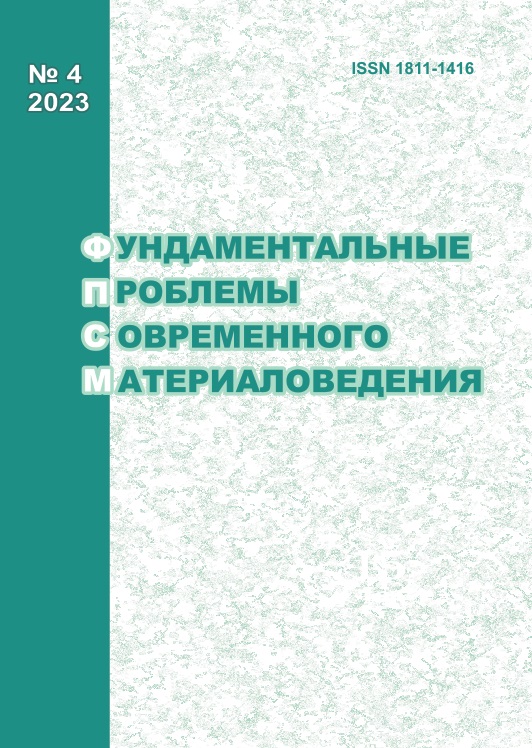SYNTHESIS AND STRUCTURE OF Cu–Sn–Ti SOLDER FOR ELECTRON-POSITRON TARGETS
10.25712/ASTU.1811-1416.2023.04.009
Keywords:
electron-positron target, kovar, boron carbide, phase composition, intermetallic, eutectic, microstructure, microhardnessAbstract
The structure and physico-mechanical properties of the brazed joint of 29NK alloy with B4C ceramics were studied. A method for the synthesis of Cu–Sn–Ti solder for the manufacture of electron-positron targets of new generation accelerators has been developed. Solder preparation and soldering were carried out in vacuum at a pressure of 10-4 Pa. The mass ratio of solder components was: 73 % Cu, 18 % Sn, 9 % Ti. The maximum temperature during the synthesis of solder was 1100 ° C. During soldering, the sample was heated to a temperature of 800 °C and held for 40 minutes. Then it was heated to a temperature of 950 °C, the exposure time was 10 minutes. A stepwise cooling mode was used to avoid residual stresses with holding at temperatures of 800 °C, 700 °C, 550 °C. The study showed the possibility of using Cu–Ti–Ni solder for brazing electron-positron targets. The soldered joint Kovar-Ceramics has a layered structure, which makes it possible to distinguish three main layers: an intermetallic layer consisting of the Cu3Sn phase, a eutectic layer, and a diffusion zone. The formation of the intermetallic layer can occur both on the surface of the carpet, and on the surface of the ceramic. The intermetallic layer at the border with the ceramic prevents the diffusion of boron into the solder and the formation of a diffusion zone, which provides high adhesion of the solder to the ceramic. Soldering modes are possible in which intermetallic compounds are not formed on the ceramic surface, which allows the formation of an extensive diffusion zone. Under the used soldering modes, an intermetallic phase forms at the boundary with the insidious layer, which can lead to brittle fracture of the soldered joint. The microhardness of the solder joint was shown by the following values: the zone of intermetallic compounds – 2.5 GPa, the eutectic zone – 1 GPa, the diffusion zone with a variable microhardness increasing from 1 to 5.5 GPa.











 Journal «Fundamental’nye problemy sovremennogo materialovedenia / Basic Problems of Material Science»
Journal «Fundamental’nye problemy sovremennogo materialovedenia / Basic Problems of Material Science» This work is licensed under a
This work is licensed under a 
